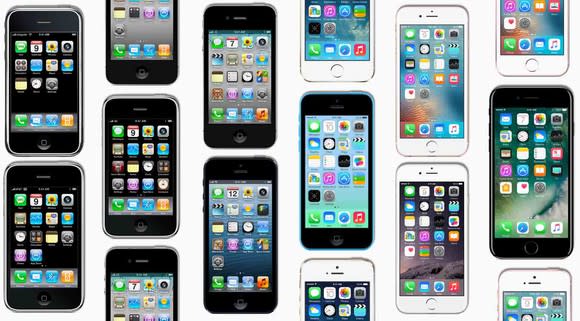Android Smartphone Makers Shying Away From Apple-Like 3D-Sensing Tech
According to a new report from DIGITIMES, "not many Android-based smartphones launched in the first half of 2018 will come with 3D sensing technology..." The reasons for that, the publication says, are "technological and cost barriers."
DIGITIMES further goes on to explain that while wireless chip giant Qualcomm (NASDAQ: QCOM) and fellow chipmaker Himax (NASDAQ: HIMX) have been working together to build "integrated 3D sensing solutions for smartphone vendors," Android-based smartphone vendors have apparently given the duo "lukewarm responses" to the technology.

Image source: Apple.
"Instead of adopting 3D sensing technology, smartphone vendors now intend to optimize [artificial intelligence] functionality for their new models," the report says.
DIGITIMES goes on to explain that such artificial intelligence, or AI, applications include "voice interface, video recording and [Internet of Things] applications."
Here's why this makes sense.
Other solutions
It seems that Qualcomm and Himax expected that Android-based smartphone vendors would want to copy Apple's (NASDAQ: AAPL) 3D sensing implementation that debuted on last year's iPhone X. It's clear that the main reason that Apple added 3D sensing capabilities to the iPhone X was to enable Face ID biometric authentication. Apple needed a replacement for its Touch ID fingerprint authentication technology as it transitioned to a nearly bezel-free display, and facial recognition was its preferred option.
While other smartphone vendors -- particularly those that seemingly indiscriminately copy Apple -- will probably adopt their own 3D sensing solutions for facial recognition, there are alternatives to facial recognition for nearly bezel-free displays emerging.
One such alternative is in-display fingerprint scanning, which Synaptics (NASDAQ: SYNA) is heavily promoting (unsurprisingly, since it seems to be first to market with a viable solution).
Other solutions include fingerprint scanners embedded on the back of the device (this is a solution that's already broadly deployed) as well as fingerprint scanners embedded in other places, like the power button (this has also been done).
Apple's 3D sensing solution is certainly neat, but it's far from easy to implement. Simply manufacturing the components required is challenging (DIGITIMES' report claims that the non-Apple 3D sensing modules suffer from low manufacturing yield rates), and I'd imagine that all of the software required to make use of that hardware is quite tricky to get right as well.
Apple has clearly spent a lot on its 3D sensing solution and appears to be investing even more into it, but other solutions should be able to get the job done at a fraction of the research and development investment (as well as component costs).
Could 3D sensing be the next 3D Touch?
In late 2015, Apple launched the iPhone 6s and iPhone 6s Plus smartphones, and the signature feature of the devices was Apple's 3D Touch technology. 3D Touch is essentially Apple's marketing name for a pressure-sensitive display.
While some Android smartphone vendors initially tried to copy this technology, it ultimately didn't catch on. Android smartphone vendors probably realized that the additional component costs and engineering complexity needed to deploy 3D Touch-like technology in their phones simply wasn't worth it.

Image source: Apple.
I think 3D sensing could end up similarly -- it'll wind up being a key feature in all of Apple's iPhones going forward, but outside of a few competing flagships, the feature might not see a ton of adoption. Take any industry analyst forecasts about how large the 3D sensing component industry will get over the next several years with plenty of skepticism.
More From The Motley Fool
Ashraf Eassa owns shares of Qualcomm. The Motley Fool owns shares of Qualcomm. The Motley Fool has a disclosure policy.
